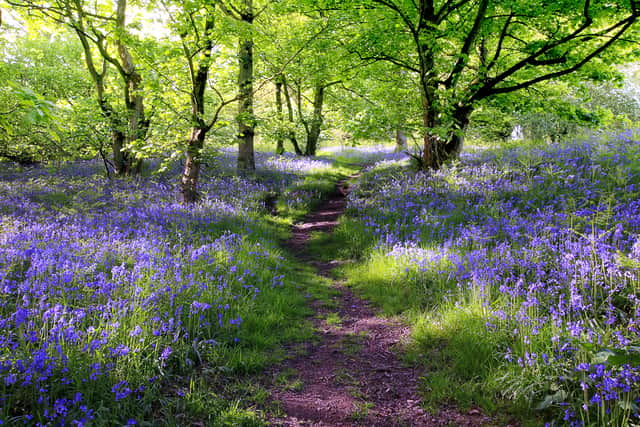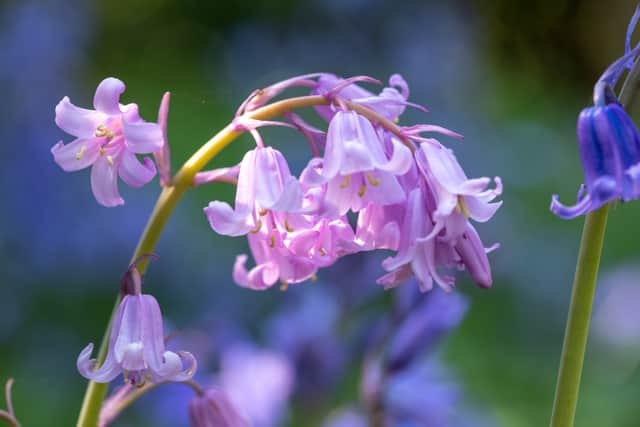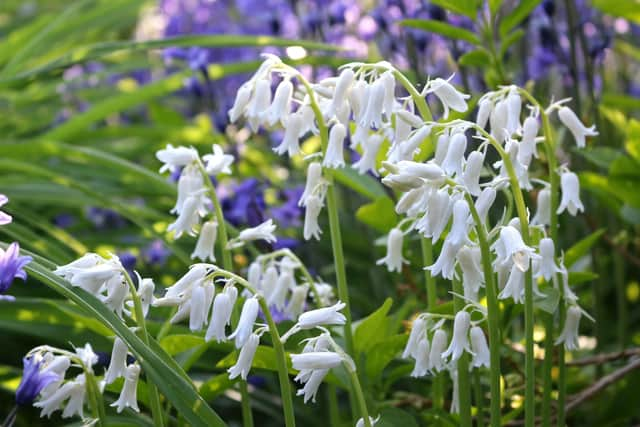When do bluebells flower in the UK? English and Spanish varieties explained - and best place to see the plant
and live on Freeview channel 276
Bluebells are a beautiful flower that are special in the UK, and that’s because this country is home to over half of the bluebells in the world. For some people, they are a signifier that spring has arrived and many enjoy seeing the sea of blue flowers while they walk in the countryside.
What you may not know, however, is that there is more than one type of bluebell and they are a protected species of flower. They could also be harmful to people and animals. So, here’s what you need to know about this distinctive flower, including when exactly it flowers and where it can be found, so that you can admire it safely this spring.
When do bluebells flower in the UK?
Advertisement
Hide AdAdvertisement
Hide AdBluebells flower in the UK in April and May, and they grow wild in woodlands across the country, according to Countryfile Magazine. Bluebells are a perennial plant which means they flower every year. The UK is home to over half of the world’s population of bluebells, as reported by the magazine. Bluebells may take a couple of years to blossom, and colonies take between five and seven years to develop. There are different types of bluebells; native UK ones, Spanish ones and a hybrid of the two.
Depending on the weather, the bluebell season can last a couple of weeks in the UK. They generally appear first in the south of the country, where temperatures are typically higher. They then appear in other areas across the country, getting higher and higher, before finishing the season in Scotland and the north.
What is the difference between Spanish bluebells and English bluebells?
There is a type of bluebell which is native to the UK, and also a Spanish bluebell which was introduced in this country around 300 years ago. It is possible to tell which one is which by looking at them. English bluebells are mostly deep blue in colour, whereas Spanish bluebells are pale blue or pink. There are, however, instances where English bluebells are also pink, according to the Which Gardening guide.


The flower shapes are also different; native bluebells are narrow and tubular and usually more heavily populated on one side of the stem but Spanish bluebells are distinctly bell-shaped and arranged around both sides of the stem. There is also a difference in the colour of the pollen; native flowers have white pollen but Spanish flowers have pale green or blue flowers. It is also possible to tell the difference between the two by smelling them as the native bluebell has a strong sweet smell but Spanish ones are not scented.
Advertisement
Hide AdAdvertisement
Hide AdIt is also possible for the two varieties to cross-breed. If a bluebell is a hybrid of the two then you will see some of the above described characteristics from each type in it. There is a potential problem, however, says Which, in that the Spanish and hybrid varieties of bluebell may eventually overtake the native species.
What colours of bluebells are there?
There are three different colours of bluebells; blue of varying shades, pink and white. Wild white English bluebells are the most rare of this group, according to the Woodland Trust. They are produced when the flower’s usual blue pigment is missing. It is believed native white bluebells occur only once in every 10,000 flowers. White and pink versions of the Spanish bluebell are common, however, and can produce hybrids with native bluebells in the wild.
Are bluebells poisonous?
Yes, all varieties of bluebell are poisonous. This is because all parts of the bluebell plant contain toxic glycosides that are poisonous. It’s not just humans who need to take care around bluebells either as the flower is also poisonous to dogs, horses and cattle. If any part of the plant is eaten, it can cause serious stomach upset, and if a large amount is consumed it may be fatal, according to the Woodland Trust. People and pets also need to be wary around touching the plants as bluebell sap is believed to cause dermatitis and skin irritation.


Where is the best place to see bluebells near me?
Bluebells are known to be a woodland flower so, as the name would suggest, the best place to see them is in your local woodland. There are many bluebell woods across all parts of the UK, so whether you live in England, Scotland, Wales and Northern Ireland there will be a woodland near you where you can go and see this beautiful flower.
Where are bluebell woods in the UK?
Advertisement
Hide AdAdvertisement
Hide AdThere are various bluebell woods across the UK. Some of the top ones are highlighted by the Woodland Trust. They are below.
England
Old Wood, Sheringham
Tattershall Carrs, Tattershall
Nidd Gorge, Bilton Banks, Harrogate
Masons Wood, Preston
Scotland
Keil’s Den, Largo
Dunollie Wood, Oban
Crinan Wood, Crinan
Glen Finglas, Brig o’Turk
Wales
Graig Fawr, Margam
Coed y Gopa, Abergele
Coed Gwempa, Pontantwm
Wentwood, Llanvair Discsoed
Northern Ireland
Drumnaph-Wood, Maghera County Londonderry
You can see a full list of bluebell woods across the country on the Woodland Trust website.


Is it illegal to pick bluebells?
The native bluebell is a protected species under the Wildlife and Countryside Act 1981. This means digging up the plant, or the bulb, in the wild is not allowed. People are even unable to dig up bluebells which have grown on their own land if their intention is to sell them. This is because the plant is delicate and, as previously explained, it takes years for a colony to develop and it could be overtaken by the Spanish and hybrid varieties, and so they need to be protected.
Can you grow your own bluebells?
Yes, it is possible to grow native bluebells in your own garden. Bluebells thrive best in moist but well-drained soil and in an area with partial shade, according to Gardener’s World Magazine. It is possible to grow bluebells from seed, but The easiest and most reliable method is to plant bluebells ‘in the green’ in late spring, which means after they have finished flowering.
Comment Guidelines
National World encourages reader discussion on our stories. User feedback, insights and back-and-forth exchanges add a rich layer of context to reporting. Please review our Community Guidelines before commenting.
